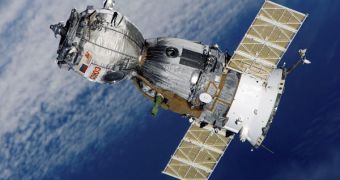With the planned withdrawal of NASA's aging shuttle fleet, by the end of 2010, nations involved in the European Space Agency (ESA) are looking for new solutions to ensure that they maintain a permanent presence in low-Earth orbit and on the International Space Station (ISS). Officials from the agency have already asked Moscow if the Federation can boost its Soyuz-capsule production from four to five per year, so that ESA, maybe together with the Canadians, can buy one.
The European agency has a spaceport of its own, located in the French Guyana, in South America. It also has the Ariane 5 heavy-lift launch vehicle, the type used to deliver the Herschel and Planck satellites in their orbit earlier this year. It can, therefore, take care of its own satellite launches. What it lacks, however, is the ability to send astronauts to the ISS. Only the shuttles and the Soviet-era Soyuz capsules are able to dock to the orbital outpost, and allow for crew rotation to take place.
Until 2015/2016, at least, only the Russian capsules will be able to reach the station. But, if budget overruns and other glitches restrain the Project Constellation development process even further, then security may become a problem. The Soyuz capsules retain their general design from the Soviet era, in spite of the fact that some modern upgrades have been installed on the original platform.
“From '13 on, we would like to have at least one European astronaut per year flying and this can be done in various ways. One of the proposals we are putting on the table is to buy a full Soyuz. The feeling with the Russians was really good. We had a great meeting and I think in two or three months, we will be able to come out with a firm proposal,” the Director of ESA Human Spaceflight, Simonetta Di Pippo, told the BBC News in an interview.
Di Pippo also suggested that Raffaello, one of the latest modules to fly to the station in 2010 aboard a shuttle, should be left there until Project Constellation was up and running. These cylindrical modules hold up to ten tonnes of science tools and supplies, but are returned to the Earth with the same shuttle they go up. By leaving them on the ISS, the crew would essentially have more room for itself. Though astronauts will probably not live inside, large pieces of equipment could be moved in, especially from the overcrowded Columbus module.

 14 DAY TRIAL //
14 DAY TRIAL //